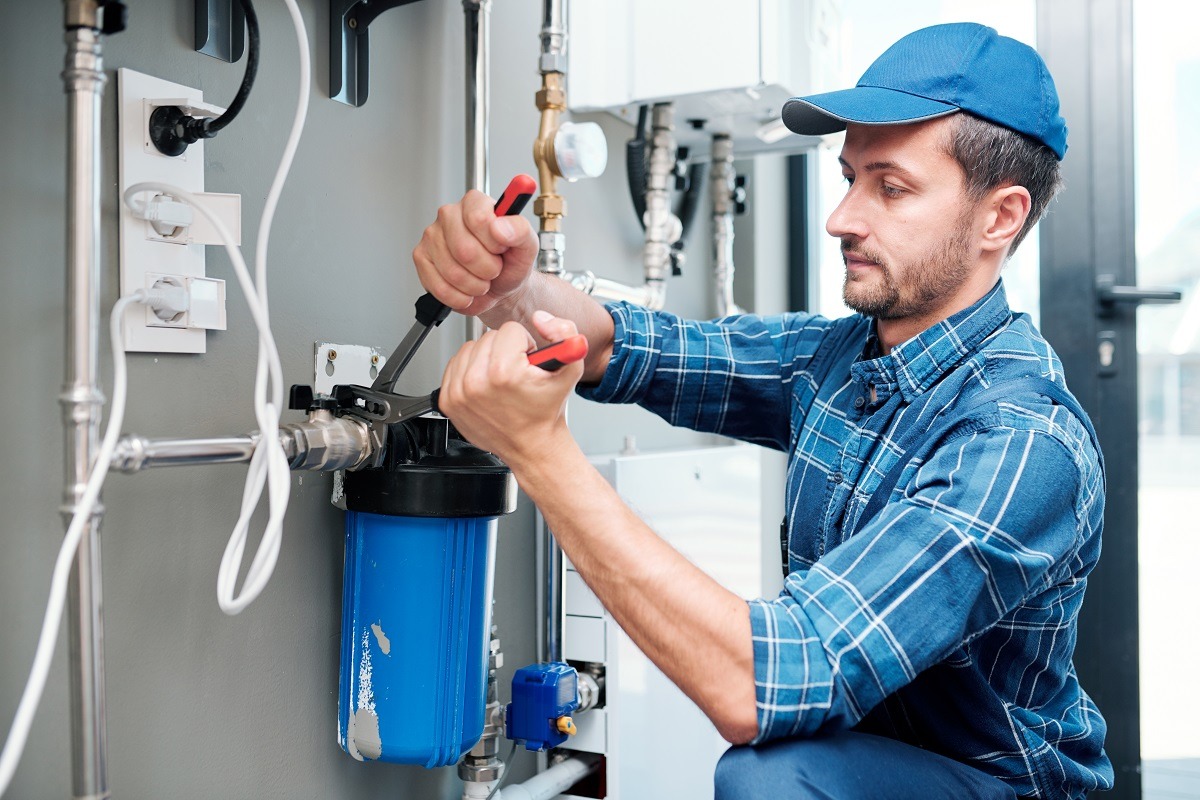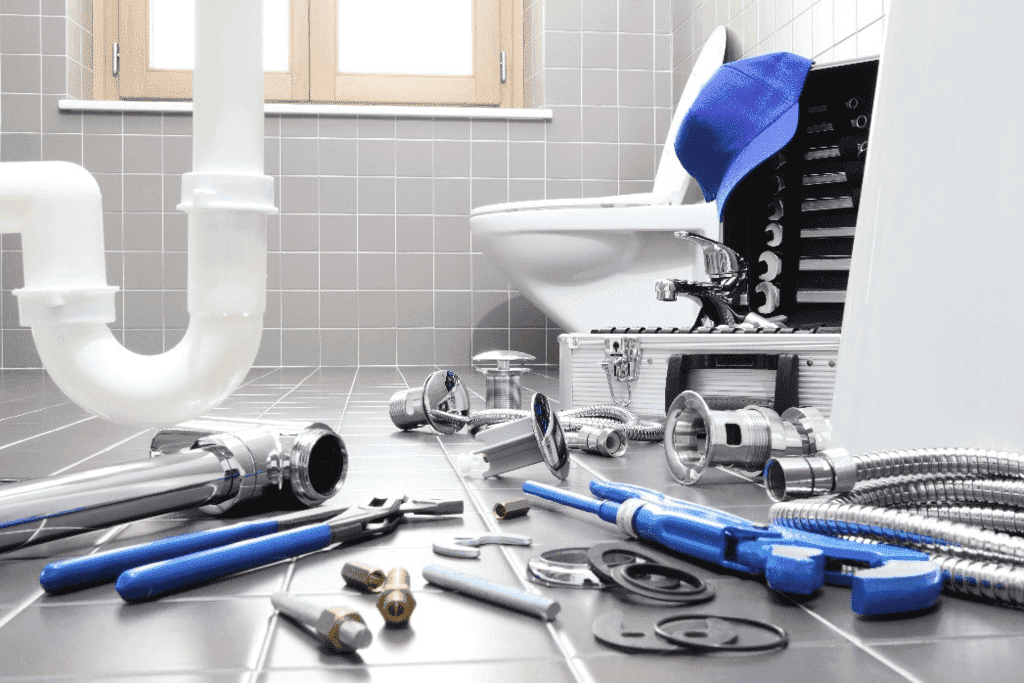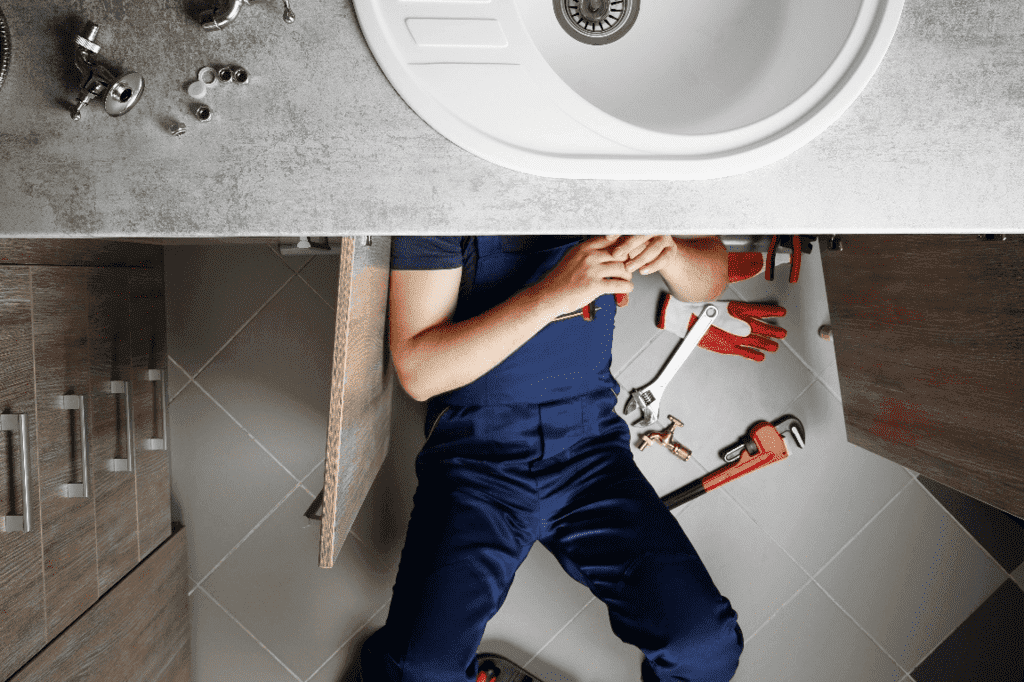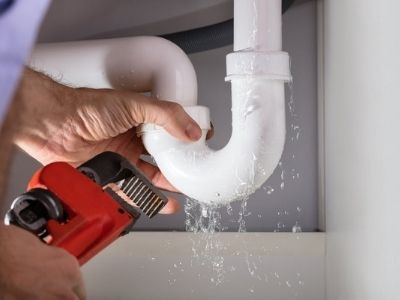We offer the following plumbing services

Need plumbing repair or maintenance? We can do it all!
When you think of a plumbing company, think of KC’s 23 ½ Hour. We have over 40 years of experience covering a wide range of services, from regular repairs and maintenance to urgent tasks that cannot wait. Our residential plumbers do their job right the first time!

24/7 emergency plumbing services
Emergencies are never convenient. But we’re here for you! Our technicians will come to the rescue with no additional fees. KC’s trucks are fully equipped for plumbing emergencies, which means you’ll have a fast response and low wait time!

When should you call us?
Instead of trying to fix something yourself, contacting our expert plumbing contractors is better, safer, cheaper, and rest assured, we repair it on the first attempt. Call us if you notice:
- Unstoppable water leaks – Usually, this is a burst pipe that releases a lot of water and may flood the area.
- No water supply (outage) – This could be a break in the mainline, and only an experienced technician can inspect and detect the precise location of the break.
- Rapid drain line leak – These leaks happen under the counter and can extend further behind the sink cabinet.
- Sewer line leaks – There will be a marshy patch on your lawn or wastewater in your bathtub.
- Water heater failure – The hot water leaks, or there is no hot water at all. There are sounds of crackling and popping, too.

What to do while you wait for our plumber
Immediately turn off the water supply using the stop valve under the kitchen sink or the cupboards. This valve may sometimes be under floorboards, so check all access points. Then, turn the valve clockwise gently.
If you have trouble finding the local stop valve (or there isn’t one), you can always use the main water shutoff valve to cut the whole supply. Depending on your home’s setup, it can be found in your basement, machine room, or yard near the water meter.
Move all electrical items or appliances far from the flooded area, and be quick! Then, lay down towels to soak up water that approaches the appliances.

Signs you need new plumbing installed
If you notice some of these signs, it may be time to consider a full renovation of that area:
- Cracks – Fractured pipes will leak water under the floor or behind a wall.
- Leaks – May be due to a crack in a pipe or a simple loose connection.
- Corrosion – If your pipes are often clogged, there’s probably rusting inside.
- Discolored water—Dirty water from the faucet may be caused by a city water supply issue or corroding pipes that need professional repair.
- Low water pressure—This could be a city water supply issue, but also faulty pipes.
- Wear and age – If your metal pipes are old, you may want to call a plumber to replace them with a more durable alternative, like PVC.
Promotions
Membership
- ANNUAL INSPECTIONS AND TUNE-UPS
- FRONT-OF-THE-LINE BENEFITS
- NO SERVICE FEE
- Get 20% off on repairs and installations
- EXCLUSIVE OFFERS
Need help covering the cost of your HVAC installation or plumbing repair?
For more information on financing, call KC’s 23 1/2 Hour today

Other services
- Furnace Services
- Gas Log Fireplaces
- Thermostats









